 |
 |
 |
| |
FIB4 Score and Gender Predict the Incidence of Hepatocellular Carcinoma (HCC) among Patients with Chronic Hepatitis C Virus (HCV) Infection: Chronic Hepatitis Cohort Study (CHeCS)
|
| |
| |
Reported by Jules Levin
AASLD 2014 Boston Nov 7-11
Fujie Xu1, Jian Xing1, Anne Moorman1, Stuart C Gordon2, Loralee B. Rupp2, Mei Lu2, Philip R. Spradling1, Eyasu H.Teshale1, Joseph A. Boscarino3, Vinutha Vijayadeva4, Mark A. Schmidt5, Scott D. Holmberg1, for the CHeCS Investigators*
1. Centers for Disease Control, and Prevention, GA; 2. Henry Ford Health System, MI; 3. Geisinger Health System, PA; 4. Kaiser Permanente Hawaii, HI; 5. Kaiser Permanente Northwest, OR
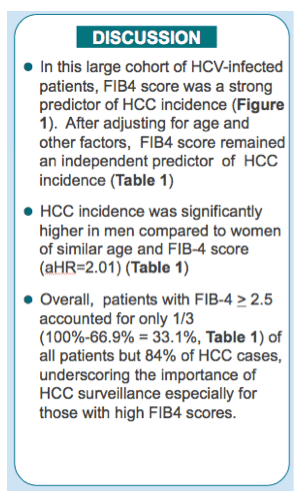
Program abstract:
Background: HCV-infected patients are at high risk for developing HCC. Using data from CHeCS, an ongoing observational cohort study among patients receiving care at 4 integrated healthcare systems in the U. S., we sought to quantify HCC incidence by fibrosis stage via FIB4 score calculated from ALT and AST, age, and platelet count.
Methods: HCV infected persons were observed from their first FIB4 score measurement in 2004 or later to the first HCC diagnosis, death, sustained virologic response or December 31, 2011. Individual patient's FIB4 score was averaged over 12-month intervals and was a time-dependent variable. HCC diagnoses were from validated tumor registry report. FIB4 score categories were determined by JoinPoint method. HCC incidence per 100 person-yrs was calculated for each FIB4 category.
Results: Of 11,727 patients ≥40 yrs, 381 (3.25%) developed HCC over mean follow up of 2.6 yrs. No HCC reported in persons <40 yrs. The mean age at first HCC diagnosis was 55 yrs in men and 58 yrs in women. HCC incidence varied significantly by FIB4 score, age and sex (Figure) and was higher in men than in women of similar age and FIB4 score. In men aged 40-49 yrs, HCC risk was elevated when FIB4 score was greater than 3.0, as was FIB4 score >2.0 for men ≥50 yrs. In men, HCC incidence rose more rapidly with increasing FIB4 scores: for patients aged 50-59 yrs, the rates of change (slopes) for FIB4 score range 3.0 to 6.0 was 1.00 in men versus 0.47 in women (p=0.04). Combining age and FIB4 score, 80% of men and 20% of women were in groups that experienced annual HCC incidence of 1% or higher.
Conclusions: FIB4 score was a strong predictor of HCC incidence among all age groups. For the majority of men, HCC incidence was greater than 1% per year, underscoring the importance of HCC surveillance, especially among those with high FIB4 scores. Figure. HCC incidence/100 person-yrs by FIB4 score, age, and sex.
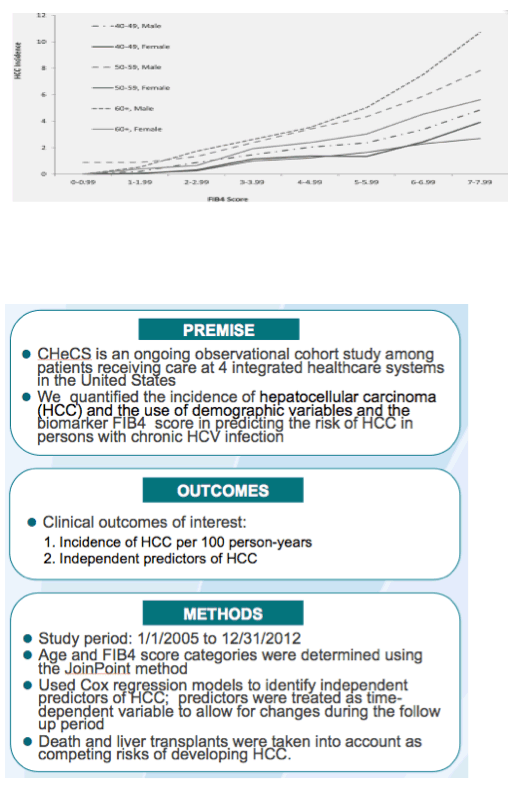
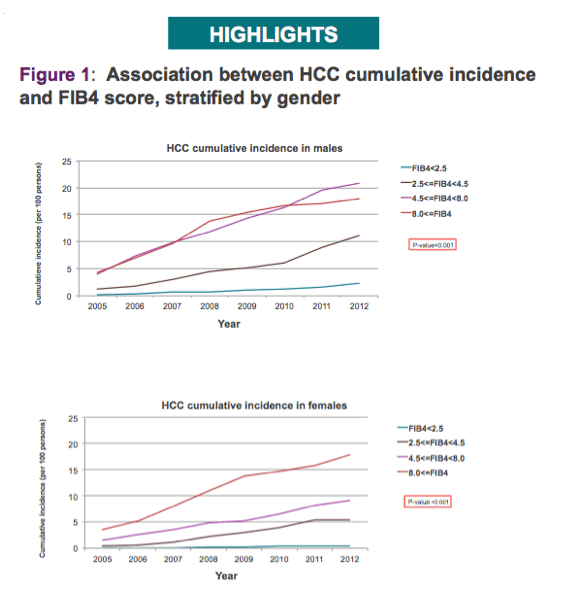
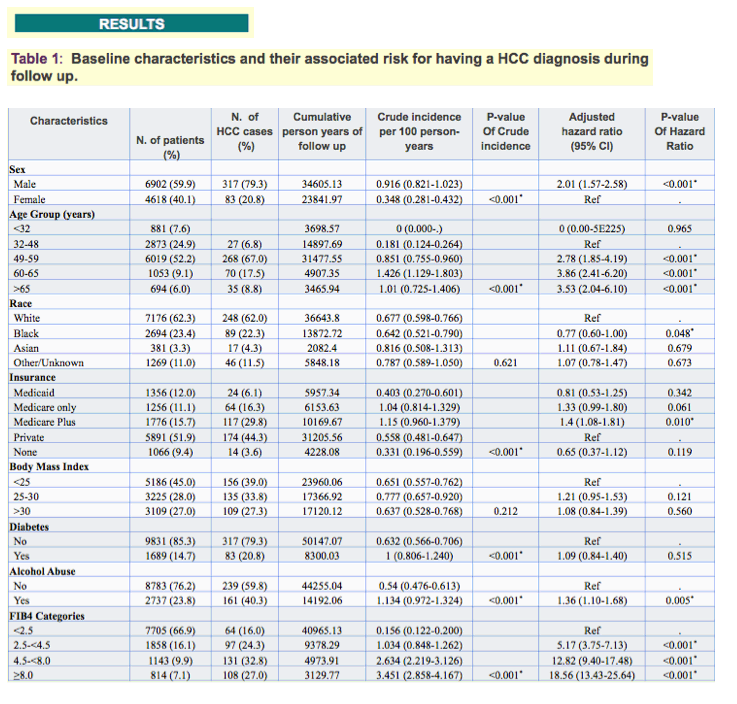
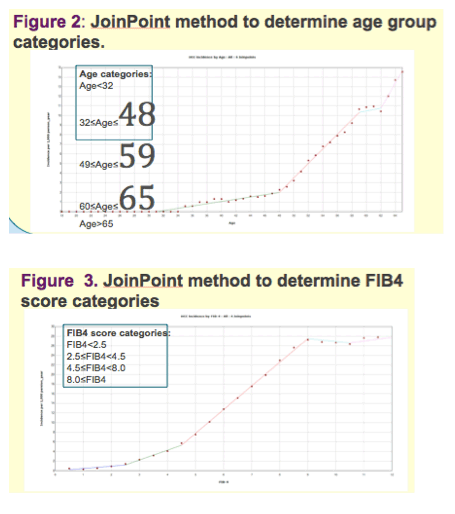
|
| |
|
 |
 |
|
|